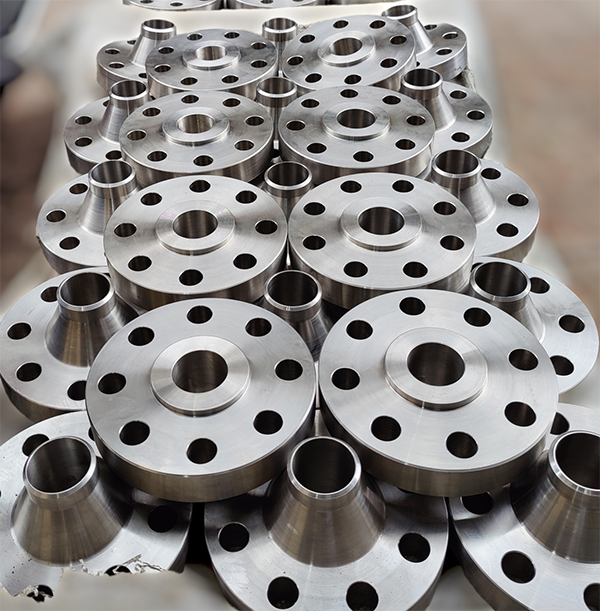Slip-on flanges are a type of flange commonly used in piping systems. In this blog, we will discuss slip-on flanges in depth, including their design, uses, advantages, and disadvantages.
What is a Slip-On Flange?
A slip-on flange is a type of flange that is slipped over the pipe and then welded in place. It has a flat face and a slightly larger diameter than the pipe. The slip-on flange is designed to slide over the end of the pipe, and then the two are welded together. The flange itself does not have any kind of internal threading or socket welding connection.
Design of Slip-On Flanges:
Slip-on flanges are typically made from materials such as carbon steel, stainless steel, or nickel alloys. The flange is designed with a flat face, which makes it ideal for use in applications where the flow of the fluid or gas is not critical. The flange is also designed with a raised face option, which is used when the flow of fluid or gas is critical, and a gasket is required.
Uses of Slip-On Flanges:
Slip-on flanges are commonly used in piping systems where easy assembly and disassembly are required. They are particularly useful in low-pressure applications where the flow of fluid or gas is not critical. Slip-on flanges are also used in applications where frequent maintenance is required, as they can be easily removed and replaced.
Advantages of Slip-On Flanges:
One of the main advantages of slip-on flanges is their ease of installation. They can be easily slipped over the end of the pipe and welded in place, making them an ideal choice for applications where time and labor are a concern. Slip-on flanges are also relatively inexpensive compared to other types of flanges, making them an affordable option for many piping systems.
Disadvantages of Slip-On Flanges:
One of the main disadvantages of slip-on flanges is that they are not suitable for use in high-pressure applications. Because they do not have any kind of internal threading or socket welding connection, they are not as secure as other types of flanges. Slip-on flanges are also not suitable for use in applications where the flow of fluid or gas is critical, as they do not provide as tight of a seal as other types of flanges.
Conclusion:
Slip-on flanges are a popular choice for many piping systems due to their ease of installation, affordability, and versatility. However, they are not suitable for use in high-pressure applications or in situations where a tight seal is required. As with any type of flange, it is important to choose the right type for your specific application to ensure optimal performance and safety.
To get more details of slip-on flanges such as specifications, dimensions, weight chart, and pricing then click here!


 Venezuela
Venezuela Myanmar
Myanmar Sri Lanka
Sri Lanka Belgium
Belgium Czechia
Czechia Greece
Greece Mexico
Mexico Tobago
Tobago Brazil
Brazil Chile
Chile France
France Colombia
Colombia South Africa
South Africa Jordan
Jordan Spain
Spain Hong Kong
Hong Kong Netherlands
Netherlands Poland
Poland Bangladesh
Bangladesh Indonesia
Indonesia Taiwan
Taiwan Nigeria
Nigeria Iraq
Iraq Ukraine
Ukraine Romania
Romania Cyprus
Cyprus Angola
Angola Norway
Norway USA
USA Saudi Arabia
Saudi Arabia Kuwait
Kuwait Thailand
Thailand South Korea
South Korea Singapore
Singapore Malaysia
Malaysia UAE
UAE Germany
Germany Italy
Italy Costa Rica
Costa Rica Kazakhstan
Kazakhstan Philippines
Philippines China
China UK
UK India
India Japan
Japan Russia
Russia Canada
Canada Iran
Iran Turkey
Turkey Morocco
Morocco Egypt
Egypt Vietnam
Vietnam Oman
Oman Australia
Australia Qatar
Qatar Portugal
Portugal